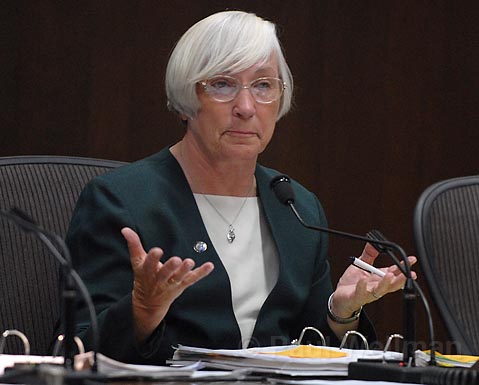South County Handed Lion’s Share of New Housing
Not Fair, Says Santa Barbara Mayor

The City of Santa Barbara was saddled this week with the responsibility for housing almost half the people who move into the county in the next six years. It did not volunteer for the job. Santa Barbara Mayor Marty Blum’s immediate reaction to the March 20 vote, 9-3, by the board of the Santa Barbara County Association of Government (SBCAG)-which consists of the county’s five supervisors and mayors of the eight cities in the county-was, “It’s not fair.”
Suddenly, housing is a hot potato even in North County, which gobbled up most of the new housing assignments in 2002, the last time SBCAG underwent the Regional Housing Needs Allocation, a process that occurs every six years. The state determines each county’s “fair share” of housing for California’s projected new residents, based primarily on counties’ geographical sizes. It handed Santa Barbara County 11,600 new dwelling units for the years 2008 through 2014, leaving SBCAG to tussle over where in the county to stick them. This time around, every jurisdiction, north and south, was looking to take as few as possible. The North County’s newfound passion for preserving its rural charm is accompanied by increasingly sarcastic remarks about Santa Barbara’s failure to house its own workers, many of whom commute from the North County.
It was Santa Maria Mayor Larry Lavagnino who made the motion to place 6,824 of those new units in the South County, 4,388 of them in the City of Santa Barbara. By way of comparison, the North County’s entire share is 4,776 new homes. The mayors of all seven of the other cities in the county voted in support. Lavagnino’s motion assigned the City of Goleta, whose new administration is not unfriendly to growth, a relatively modest 1,641 units, and it gave the City of Carpinteria just 305. The only SBCAG boardmembers to stand beside Blum were supervisor Janet Wolf and Salud Carbajal, who voted “nay,” even though the unincorporated South County-which they represent along with Supervisor Brooks Firestone-was tasked with accommodating only 291 dwellings.
If the March 20 allocations stand, the City of Santa Barbara will not necessarily have to rezone, because its current map has room for all 4,388 new housing units. But the city would have to craft traffic, parking, and environmental permitting procedures proving that it means business should developers step forward to build the units.
In the vote’s aftermath, critics have faulted Blum for failing to block the play, while a few members of Santa Barbara’s City Council have mentioned a possible lawsuit. The game is not over yet, though. The SBCAG board’s March 20 vote will guide staff in crafting the regional housing plan’s first draft, which is to be reviewed by the local jurisdictions. A final draft is expected by late fall. Issues that may be raised during that process include the reliability of numbers used by SBCAG’s Technical Planning Advisory Committee-composed of the various jurisdictions’ planning directors or their representatives-when it came up with its recommendations to the board, though the board didn’t follow the committee’s recommendations, which were much kinder to the City of Santa Barbara than the prevailing motion. However, the board did rely to some extent on the committee’s job statistics, which, among other things, counts Cottage Hospital as 400,000 square feet of new development rather than the remodel that it is.
During its next meeting, in April, the board will divvy up the approximately 4,600 units of the 11,600-or 40 percent-that must, according to the state mandates, be affordable to people with low or very low incomes.



